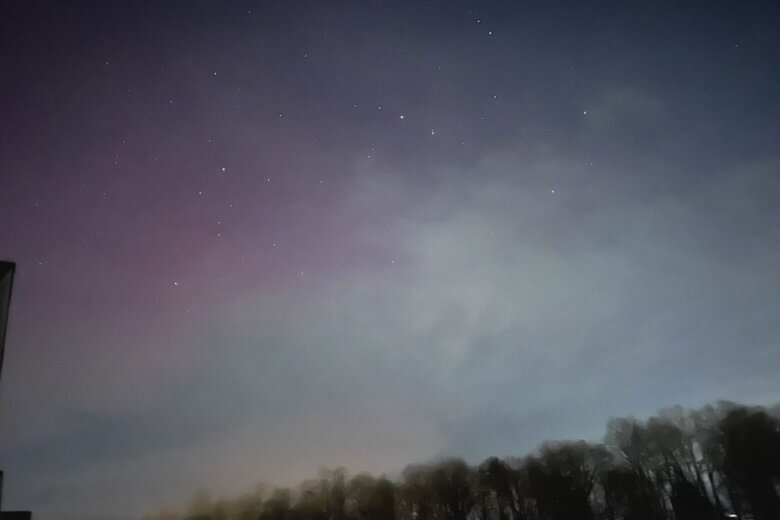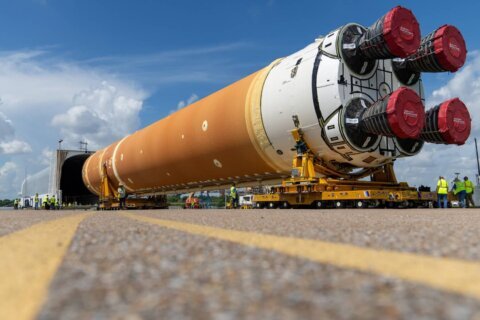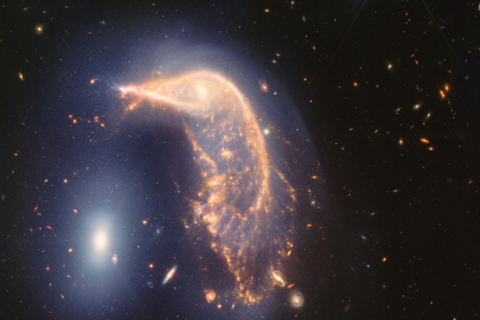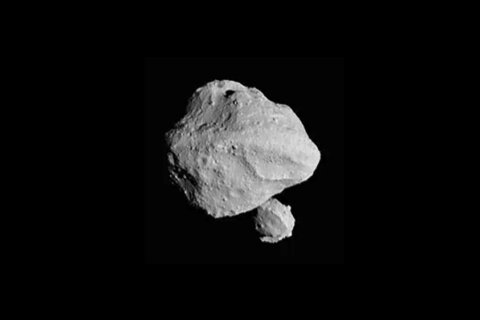



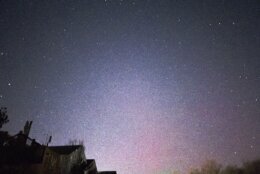

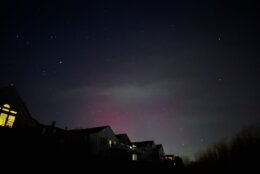
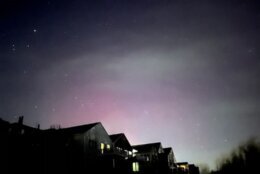
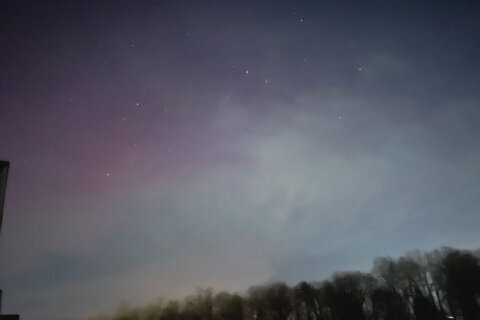
Thursday night, Mother Nature delivered a rare sight in the skies of Virginia (and perhaps the whole D.C. region): the Northern Lights or auroras.
People on social media were posting pictures from various locations around the world, including the U.S. and Virginia.
The National Oceanographic and Atmospheric Administration (NOAA) Space Weather Prediction Center issued alerts throughout the evening for ongoing G3 and G4 (severe) Geomagnetic Storms. For the G4 Alert issued just after midnight, NOAA stated, “Aurora – Aurora may be seen as low as Alabama and Northern California.”
I was able to photograph the aurora from my backyard in central Virginia using my iPhone Pro Max 13 in “Night Sky Mode.” I really couldn’t see the lights visually, but could using the iPhone.
It is possible auroras will be visible again Friday night, but the terrestrial weather and the D.C. area’s more southerly location isn’t very promising for clear skies.
This is the third time I have detected auroras in Virginia over a span of 30 years – 2003, 2015, 2023. With the sun being so active during this solar cycle, we might just luck out again.
How to prepare
Our best bet is to once again monitor NOAA’s resources and space-related social media sites, such EarthSky.org and space.com, for updates. If it appears, the aurora will be visible to adjacent northern states, it would be worth taking a look to the north from a dark sky site with a clear horizon.
You might be able to detect some color in the sky if aurora are present, but they would likely be low on the northern horizon. Wide field binoculars might help. Use a camera or smartphone that can take exposures of several seconds — including using “Night Sky” or “Low Light” settings if your camera offers them — of the northern horizon.
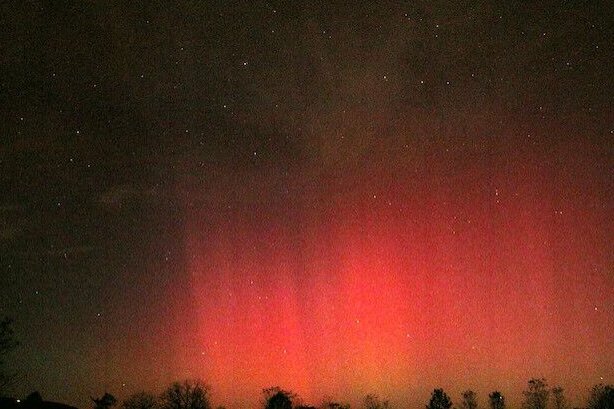
Steady the camera, or use a tripod for best image results. If you’re lucky, the camera may capture aurora that your eyes can’t perceive.
With our terrestrial weather being such a factor in our daily lives, we are also directly affected by “space weather,” which can produce a variety of events, including Thursday’s geomagnetic storm and aurora.
Space weather, such as our own terrestrial weather, is caused by Earth’s interaction with the sun. We know it will be there every new day and count on it for life-giving warmth and energy. We also have become accustomed to it being, typically, well-behaved. What many people may not know is that our sun undergoes an 11-year solar cycle that can affect space weather throughout our solar system.
Spaceweather.com has a daily snapshot of what the space weather in the solar system is going to be like, along with a current image of the sun.
Our sun is a 4.5-billion-year-old star that we have been monitoring since Galileo’s time. Today, humans have a fleet of spacecraft that monitor the sun and space weather round-the-clock.
The sun is currently in Solar Cycle 25 and is progressing toward Solar Maximum, which is predicted to occur July 2025. As the sun approaches Solar Maximum, it produces more sunspots, which in turn produce solar events like Thursday’s Level G3 geomagnetic storm.
The sun had an episode of disturbed behavior in 1859, which, if it were to occur today, could affect our technology and communications-dependent society if caught unprepared.
On Sep. 1, 1859, the sun experienced a solar eruption that was observed by English astronomer Richard Carrington and ended up bearing his name. The Carrington Event was a watershed event in solar astronomy, and also the sun’s ability to affect the Earth, as nothing like it has been seen since — and we’re lucky it hasn’t.
If a Carrington-level solar event were to happen today, the effect on modern infrastructure could be potentially catastrophic, especially the electrical grid on which we all depend. If you think this is unlikely or too sci-fi to be true, I suggest you read the report by the National Academies of Science, published in 2008.
Just recently, the sun had a very powerful space weather event on March 12, which, fortunately for us, occurred on the far side of the sun relative to Earth’s position in the solar system.
Follow my Twitter @SkyGuyinVA and daily blog to keep up with the latest news in astronomy and space exploration. You can email me at skyguyinva@gmail.com.

